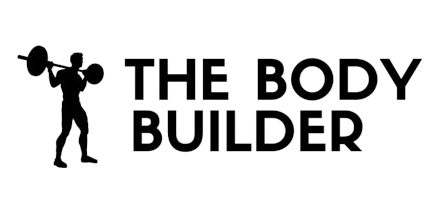Lower back SMR
Lower back self-myofascial release (SMR) is a self-administered massage technique used to target tight and painful areas of the lower back. Commonly, a foam roller, lacrosse ball, or other massage tool is used to apply pressure to the quadratus lumborum or spinal erector (erector spinae) muscles of the lower back. This is often accompanied by SMR on the glutes or piriformis muscles, and by stretches that focus on the piriformis or hips. It is important to note that lower back SMR may aggravate existing pain or injury, so it is best to exercise caution when performing it.
The goal of lower back SMR is to help the muscles relax, or "release." This can provide relief from tightness and pain. It can also improve mobility in the lower back area, allowing for a greater range of motion and improved flexibility. In addition, it can help improve posture and reduce the risk of future injury.
Lower back SMR can be a beneficial tool for those seeking relief from lower back pain and tightness. However, it is important to understand that the technique can potentially cause more harm than good if not done correctly. It is recommended to first consult a physical therapist or doctor before performing lower back SMR. This can ensure that it is done safely and effectively.
Type:
Stretching
Muscles Used:
Lower Back
Level:
Intermediate
Equipment:
Foam Roll
Benefits Of This Exercise
- Lower back SMR can help relax tight and painful muscles, improving mobility and flexibility in the lower back area.
- It can help improve posture and reduce the risk of future injury.
- It can provide temporary relief from exercise-induced lower back soreness.
- Lower back SMR can be done as part of a warm-up or post-workout recovery.
- Before performing lower back SMR, it is important to consult a physical therapist or doctor to ensure it is done safely and effectively.
Step by Step Instructions For Lower back SMR
- Consult a physical therapist or doctor before performing lower back SMR.
- Begin in a seated position with a foam roll placed under the lower back.
- Cross arms in front of you and protract shoulders.
- Raise hips off of the floor and lean back, keeping weight on the lower back.
- Shift weight slightly to one side, keeping weight off of the spine and on the muscles to the side.
- Roll over the lower back, holding points of tension for 10-30 seconds.
- Repeat on the other side.
Warm Up Tips
- Start by sitting in a comfortable position and placing a foam roll under your lower back.
- Cross your arms in front of you and protract your shoulders, finding your starting position.
- Raise your hips off the floor and lean back, keeping the weight on your lower back.
- Shift your weight slightly to one side, focusing on the muscles to the side of your spine.
- Roll over your lower back, holding points of tension for 10-30 seconds.
- Repeat the rolling motion on the other side of your lower back.
Lower back SMR Safety Tips
- Consult a physical therapist or doctor before performing lower back SMR to ensure it is safe for you and to receive proper guidance.
- Start in a seated position with a foam roll placed under your lower back. Cross your arms in front of you and protract your shoulders to maintain proper form.
- Raise your hips off the floor and lean back, keeping your weight on your lower back. Shift your weight slightly to one side, avoiding putting pressure directly on the spine.
- Roll over your lower back, holding points of tension for 10-30 seconds. Be mindful of any pain or discomfort and avoid rolling directly on any existing injuries.
- Repeat the rolling motion on the other side to target both sides of the lower back.
- Do not apply excessive pressure or force during the SMR. Use controlled movements and listen to your body’s feedback.
- Do not perform lower back SMR if you have an acute injury, severe pain, or inflammation. It is best to allow the area to heal before attempting this technique.
- Combine lower back SMR with stretches that focus on the piriformis or hips for a comprehensive approach to releasing tightness and improving mobility.
- If at any point you experience increased pain or discomfort, stop the exercise and seek advice from a healthcare professional.
- Consistency is key. Incorporate lower back SMR into
Incorporating Into Other Workouts
One way to incorporate lower back self-myofascial release (SMR) into workouts is by including it as part of a warm-up or post-workout recovery routine. Here's how you can do it:
1. Consult a physical therapist or doctor before performing lower back SMR to ensure it is done safely and effectively.
2. Begin in a seated position with a foam roll placed under your lower back.
3. Cross your arms in front of you and protract your shoulders.
4. Raise your hips off the floor and lean back, keeping your weight on your lower back.
5. Shift your weight slightly to one side, focusing on the muscles to the side of your spine.
6. Roll over your lower back, holding points of tension for 10-30 seconds.
7. Repeat the rolling motion on the other side.
8. You can also incorporate SMR on the glutes or piriformis muscles, as well as stretches that target the piriformis or hips.
By including lower back SMR in your warm-up routine, it can help relax tight and painful muscles, improving mobility and flexibility in the lower back area. This can also help improve posture and reduce the risk of future injury. Additionally, incorporating lower back SMR in your post-workout recovery can provide temporary relief from exercise-induced lower back soreness.
Remember, it is important to exercise caution when performing lower back SMR, as it may aggravate existing pain or injury. Consulting a physical therapist or

